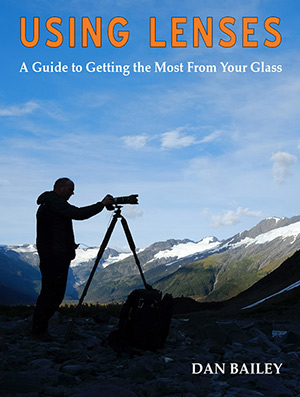Frequent readers to my blog as well as those who read my posts on The Photoletariat will notice that I often write about the stock photography industry. Most of the knowledge that I draw from for my articles and posts comes from my experience as a contributor to ten different stock photo agencies during the past eighteen years. Here is a list of all the agencies that I’ve worked with, as well as a few brief notes about each one.
1. Light Sources Stock
I began my stock photo career with this small Boston agency in early 1992. Run by former photographer rep and industry expert, Pat Hunt, Light Sources licensed images to both local and national clients and put out an small agency catalog. Although small, the agency attracted a number of high profile and talented New England based photographers, including Seth Resnick.
For one year, I worked as the assistant editor for Light Sources and ran the day to day operations of the agency. During that time, they joined the newly formed Kodak Picture Exchange and became one of the first agencies in the country to license images digitally through the service.
I cut my teeth working with Light Sources. I didn’t make very much money, but I learned a great deal about the industry and improved my creative and editing eye, as well as my client negotiating skills, all of which have helped me tremendously during the rest of my career.
2-3. The Stock Solution/Ad Stock Photo
When I moved to Colorado in the mid 1990s, I signed on with this well known Salt Lake City based agency. I saw very few sales with them, though, even as they moved totally online in later years. It was still early in my career, and the quality of my photography was still evolving. Faced with a tough economy and an extremely competitive market, The Stock Solution closed it’s doors in 2007 and transferred its entire collection of imagery to the online portal Ad Stock Photo. I still have a number of images up on the site, but have yet to see a single sale.
4. Index Stock Imagery
During its late 1990s agency buying binge, Index Stock acquired Light Sources Stock. At the time, I was very excited, because it gave me a free pass into a big agency. I saw a definite increase in big during my tenure with Index over the the next few years; I made a few thousand dollars per year with and continually submitted new work every quarter.
However, by 1999, like many photographers, I had become frustrated with the Index’s late payments, their emphasis in selling to low end markets, and by the fact that they decided to switch the commission rate from 50% to 40%. I declined to sign the contract rider and accept these new terms, and terminated my contract with Index.
Ironically, though, by the mid 2000s, Index had brought Pat Hunt on as Sales Director in the New York office, and over the next few years, I actually saw a dramatic increase in residual sales of my old Index images. However, it sometimes took a year to be paid for those sales.
5. Solus
Right after terminating with Index, I got in on the ground floor with Solus Images, which was started by the former publisher of Direct Stock. In contrast to the marketing strategy that some agencies were pursuing at the time, Solus built up a boutique collection of highly conceptual images, which they marketed to high end clients with great initial success. Those images that I originally placed with Solus sold well, and have continued to earn me a rather sizable income over the years.
Unfortunately, just as things were building for Solus, the post 9/11 economy shook up the entire industry. Solus entered into a licensing agreement with Calgary based Veer, who eventually bought the Solus brand outright. The entire business was transferred to Calgary, except for my editor, Phyllis Giarnese, with whom I had developed an excellent working relationship.

Download My Free Photography eBook
Let me show you some techniques that will help make you a better, more proficient and more creative photographer!
6. Veer
By now, everything was online and over the next few years, Veer sales became my bread and butter agency. I received a regular stream of high end sales through them, as well as through Corbis, who was one of their main distributors. Commissions have been up and down through the recent economic slowdown, but earlier this year, I had a gross sale through Veer for over $13,000, my biggest single sale ever. Lately, though, since the Corbis restructuring, my Veer sales have plummeted and I now see average monthly commissions of less than $200.
7. Alamy
Like just about every other photographer on the planet, I have put a large number of images with UK based Alamy. An enormous distributor of imagery, Alamy sells through channels all over the world. I don’t sell often through Alamy, but I have made a few thousand dollars with them over the past few years. I seem to average about one or two sales per month.
8. Photolibrary
In 2006, Australian based Photolibrary bought Index Stock and became the third largest agency in the world. I got in with them through my former Veer editor, Phyllis, who they’d hired to be their Director of North American Content. I gave them a large batch of initial images and have been contributing heavily over the past few years.
I’ve seen my Photolibrary commissions double nearly every quarter for two solid years, with both RM and RF imagery. They appear to have a very strong sales team, and I have high hopes that this trend will continue. In a way, I have come full circle and I now find myself back with what remains of Index, and again working with Phyllis Giarnese, my old Solus editor.
9. Corbis
I signed on with Corbis in 2007 when they acquired Veer. I had high hopes for the merger and looked forward to the steady income that I was used to seeing with Veer, plus additional royalties that I would now gain through additional markets with Corbis.
A few months ago, though, Corbis made a surprising move by shifting all rights managed imagery to the Corbis side and rebranding Veer as a distributor of royalty free and microstock imagery. Unfortunately, since this change has gone through, I have seen a huge drop in my Veer income, and I have not yet seen the rights managed side of the business pick up for me with Corbis.
I remain optimistic, though, since Corbis certainly has the resources to remain competitive. They have an exceptionally strong rights managed collection, and their rebranding efforts during economic slump could end up paying off big for them as the economy bounces back. However, at this point it’s still too soon to tell how it will all play out and if they will end up attracting a large sector of high end photo buyers that used to shop at Veer for their conceptual imagery.
10. Alaska Stock
Shortly after moving to Alaska in the fall of 2008, I signed on with Alaska Stock. They’re my first local agency since Light Sources and I love the fact that I can ride my bike up to the office to deliver images, chat with the owner and staff, or discuss current industry trends and needs.
Since they’re a slightly specialized agency in a unique market, I have high hopes for long term success with Alaska Stock. They’re one of the few small independent agencies that are still going strong. I’ve been with them for just over two years and so I’m still building up a solid collection with them, but I’m starting to see regular monthly income.
As it stands now, I’m currently aligned with the second and third biggest agencies in the world (Corbis and Photolibrary), as well as an international portal (Alamy), and a specialty agency (Alaska Stock). I feel that I have a well diversified position in the marketplace, and remain positive that as the global economy continues to recover, my stock photo collections across these agencies will continue to produce a regular channel of income for me in the coming years.
If any readers have had experience with any of these agencies, especially the older ones that are no longer around, let me know!




Thank you for such great information i read on your blog.
I am a Nigerian, and have developed a software to distribute Nigerian and African images online in form of stock photo agency.
Please kindly go through the site and advice.
I feel I really need help in terms of site structure and running the business.
Please advice.
Thank you